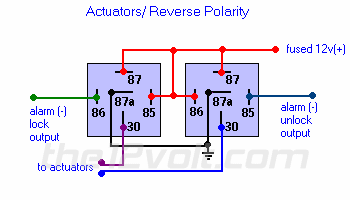 Printable version
Printable version


| You cannot post new topics in this forum You cannot reply to topics in this forum You cannot delete your posts in this forum You cannot edit your posts in this forum You cannot create polls in this forum You cannot vote in polls in this forum |

| Search the12volt.com |
Follow the12volt.com 
Sunday, December 14, 2025 • Copyright © 1999-2025 the12volt.com, All Rights Reserved • Privacy Policy & Use of Cookies


Sunday, December 14, 2025 • Copyright © 1999-2025 the12volt.com, All Rights Reserved • Privacy Policy & Use of Cookies
Disclaimer:
*All information on this site ( the12volt.com ) is provided "as is" without any warranty of any kind, either expressed or implied, including but not limited to fitness for a particular use. Any user assumes the entire risk as to the accuracy and use of this information. Please
verify all wire colors and diagrams before applying any information.







 Everything works except for the door lock and unlock with remote. What am I doing wrong?
I won't be wiring starter kill relay and not use trunk release.
Please help me out.
Everything works except for the door lock and unlock with remote. What am I doing wrong?
I won't be wiring starter kill relay and not use trunk release.
Please help me out.



 I wire the lock/unjlock wire of the alarm to two relays like in the above picture and I connect only one function first, the unlock just to test, but when i press the remote, it doesn't unlock, instead it blows the fuse of the alarm system.
I wire the lock/unjlock wire of the alarm to two relays like in the above picture and I connect only one function first, the unlock just to test, but when i press the remote, it doesn't unlock, instead it blows the fuse of the alarm system.